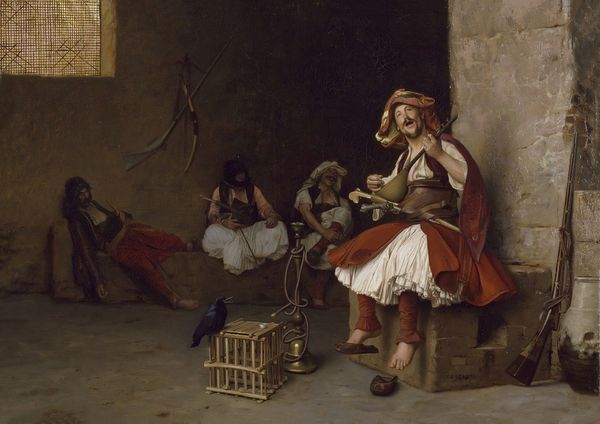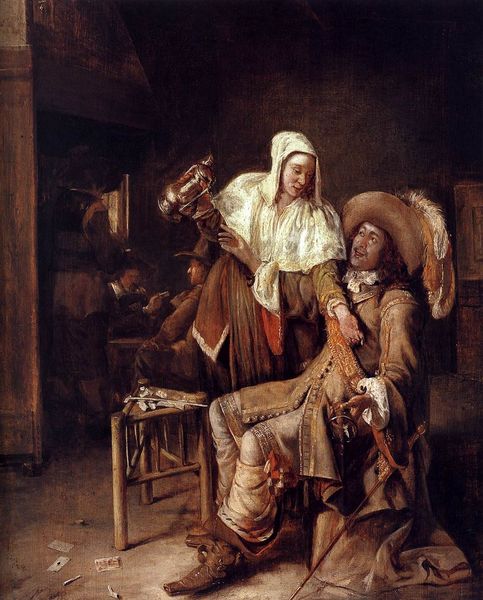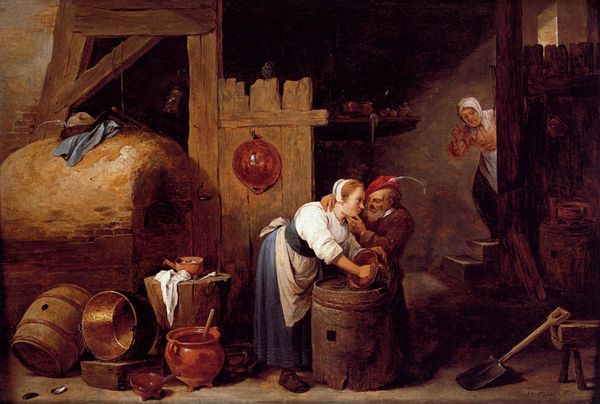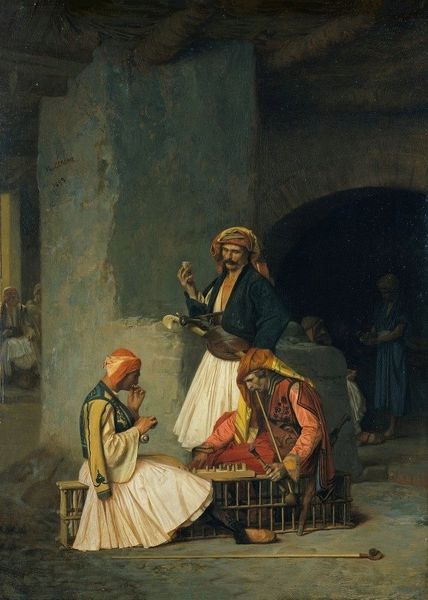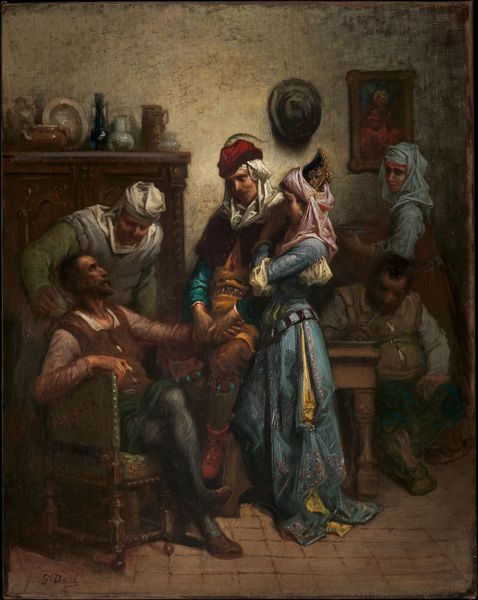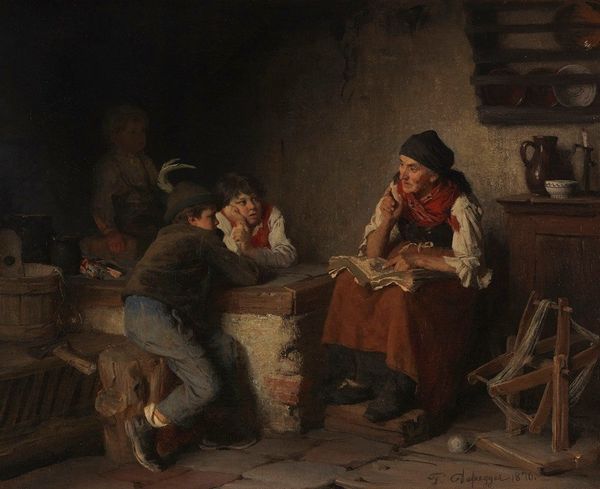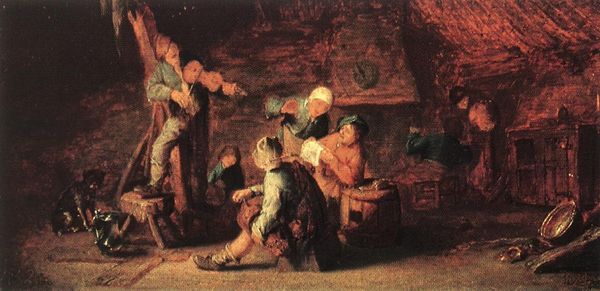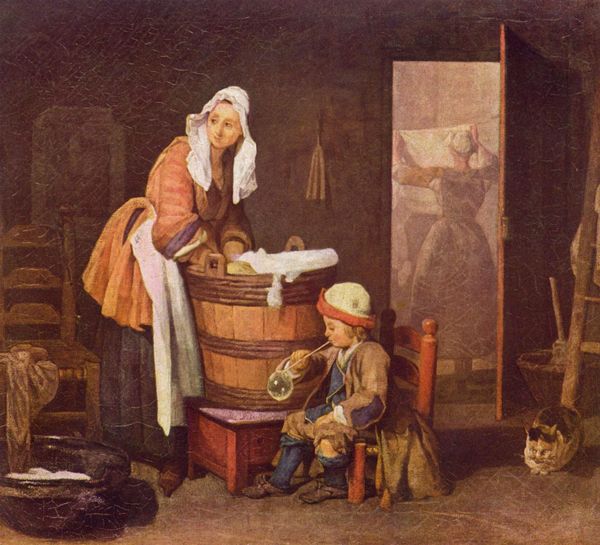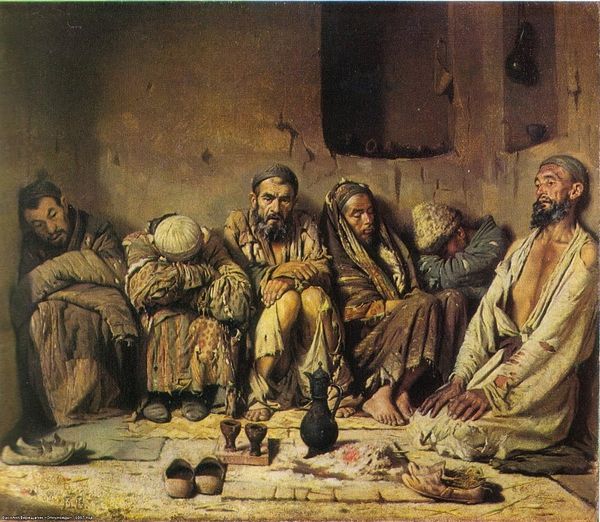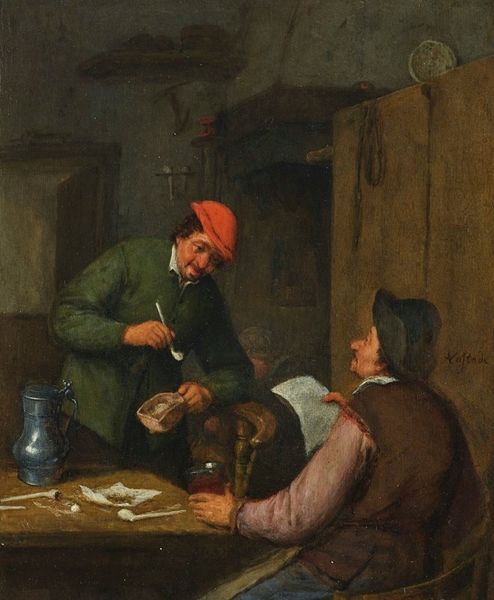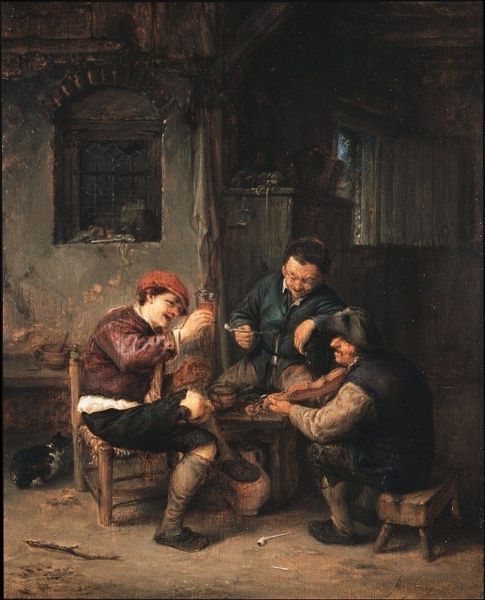
painting, oil-paint
#
portrait
#
painting
#
oil-paint
#
oil painting
#
group-portraits
#
romanticism
#
genre-painting
#
academic-art
#
realism
Dimensions: 74 x 97 cm
Copyright: Public domain
Curator: "Chatting by the Fountain," an oil painting potentially made in 1867 by Jehan Georges Vibert. What catches your eye first when looking at this work? Editor: Immediately, it’s the earthy tones that set a sort of rustic scene. It gives me a glimpse into everyday life, possibly within a romanticised view of the period. There's a certain social intimacy in it. Curator: Indeed, Vibert situates us in a decidedly public space – a communal fountain. The interplay between those in the background versus those in the foreground suggests certain class divisions. What stories do you think this imagery tries to tell about societal roles? Editor: The man lounging confidently, seemingly in conversation with the woman, feels very performative. We might consider ideas around masculinity here, power, and social expectations around gender within 19th-century Europe. The dark shadow and the faces behind, almost erased by the scene, can trigger discussions about social background or discrimination at the time. Curator: And let’s consider how a painting like this circulates. This work could have provided those who commissioned or purchased such works access to an idealized rural life. Consider how it’s framed as Realism, yet potentially reinforcing particular socio-economic ideas about work or leisure in these kinds of images. Editor: Right. The idea of Realism itself has to be unpacked because whose "real" are we seeing represented? Were working class people viewing themselves with such idealized depictions, or were these works primarily for bourgeois consumption, reassuring viewers of their own elevated place within the social hierarchy? Also the idea of leisure at a communal fountain allows thinking about possible racial identity of those individuals. Curator: Vibert created these works to feed that cultural demand. Understanding that helps us analyze his work, the socio-political time he lived in, and ultimately this piece itself and its own value, market and artistic at the time. Editor: Absolutely, contextualizing the image makes it even richer to discuss, seeing the past through different filters. It brings discussions about that specific moment in time but even with ourselves in today's societies. Curator: Yes, there's a certain power in revealing those conversations, isn't there? Editor: Indeed, art should serve to initiate meaningful conversations and awareness.
Comments
No comments
Be the first to comment and join the conversation on the ultimate creative platform.
